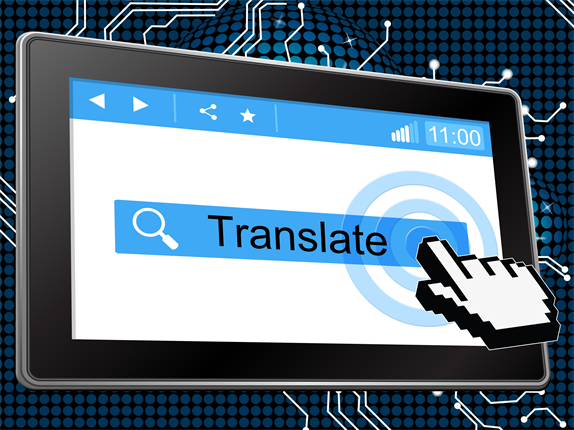
From Google Translate to machine translation software for businesses: letting a computer take care of your translation needs seems like the ultimate language solution – but is it too good to be true and will this new technology put us mere human translators out of a job?
Bernadette Roach from IOE&IT Business Member AST Language Services tells us more...
What is machine translation (MT)?
An excellent example of MT is Google Translate, which most of us will have used at some point – whether for work, travel or sheer amusement. Text in language X goes in, text in language Y comes out. It may seem simple, but the technology behind these programs is actually pretty complex.
There are a few different types of MT systems out there ranging from dictionary- and grammar-based programs to more intuitive systems that learn as they work and are centred around a corpus of previous translation/source pairs. They are often highly customisable and can be adapted to include brand- or sector-specific vocabulary. However, this is usually a lengthy and expensive process that requires a linguistic technician.
How can MT benefit companies?
MT really comes into its own when a speedy translation is required for internal purposes, for example as part of a research project or for understanding correspondence in a foreign language. Aside from the excellent customisable features mentioned above, most MT providers offer a secure cloud service to store the masses of data needed to run such programs. Security is essential where sensitive material is involved and Google Translate might not be as secure as you think. (For more information on using Google Translate for business see our upcoming blog "Google Translate").
Is MT set to replace human translators?
The main disadvantage with MT is the level of fluency and accuracy of the translations produced. This isn’t so much of a problem with low visibility texts intended for internal use, but for texts which require a highly-polished feel, like correspondence with clients or marketing brochures, MT just won’t cut it. We’ve all seen some of the stilted, odd-sounding translations that Google Translate comes up with, but one thing to bear in mind is that computers do not have the nuanced sense of register or politeness that we do and there’s a good chance your important e-mail won’t sound quite as you meant it.
Similarly, accuracy in technical or legal translations, such as a supply agreement, is paramount if all parties are to be adequately informed. There’s no guarantee a computer will understand the context or nuances of a text as well as a human translator. Professional translators aim to produce translations that read fluently, not like translations, and pay particular attention to ensuring the target text is accurate and loyal to the source.
Humans and machines – the future of translation?
Machine translation post-editing (MTPE) is becoming increasingly popular and involves a human reviewer checking a machine translation. This may seem like a match made in heaven but translation quality can often be so unreliable that proofreaders need to spend much more time checking than expected. Companies can find themselves paying more than they would have for a professional human translation.
This doesn’t mean that MT isn’t making its way into the translation company’s arsenal, however. Coupled with our already beloved computer aided translation (CAT) tools (see our blog on CAT tools “A peek inside a translator’s toolbox: CAT tools”, coming soon), MT can speed up human translator selection by clarifying the subject matter of source texts, particularly in more unusual languages. And its growing acceptance as a fast, inexpensive “gisting” tool across wide areas of international business, health care, technology and academia can only be good news for professional translation services when something rather more than just “the gist” is required.
So, I don’t think we’re about to see the dawn of a purely automated translation industry. MT has come on leaps and bounds in recent years and is sure to develop far beyond the realms of our imagination. It has undoubtedly made a home for itself in the world of business but, when it comes to the written word, there really is very often no substitute for the human touch. No, we’re here to stay!

